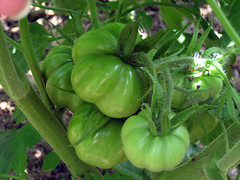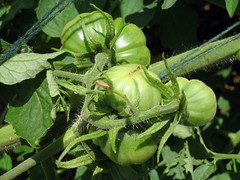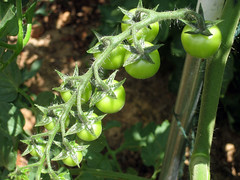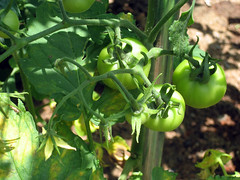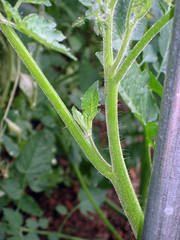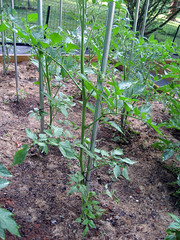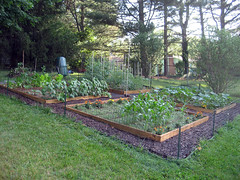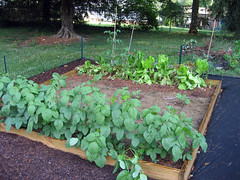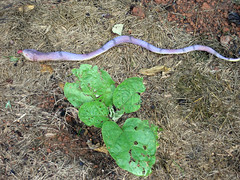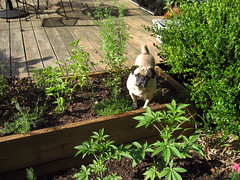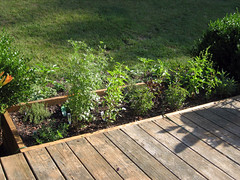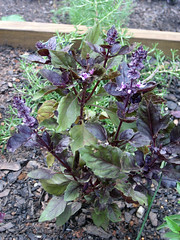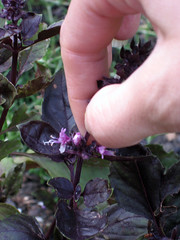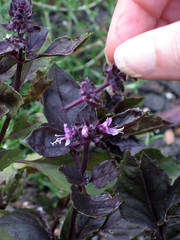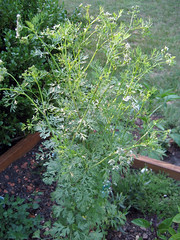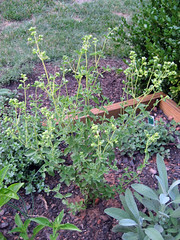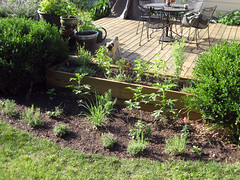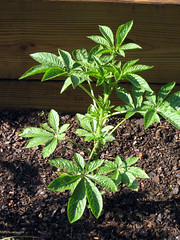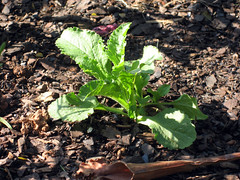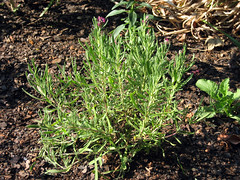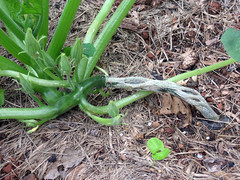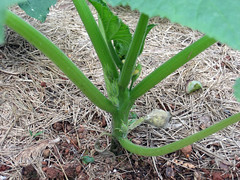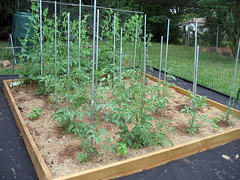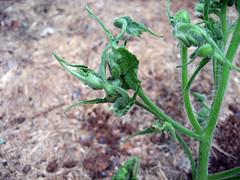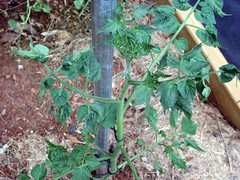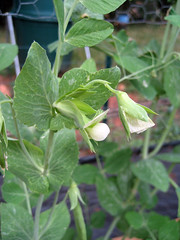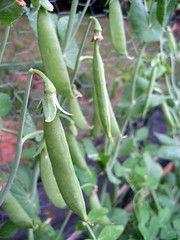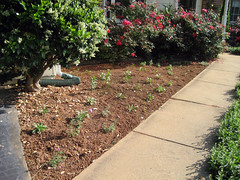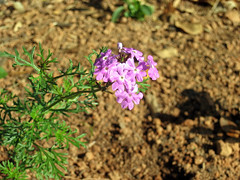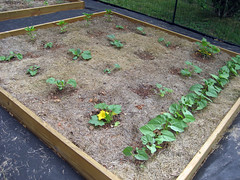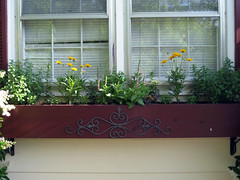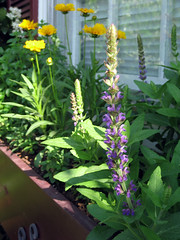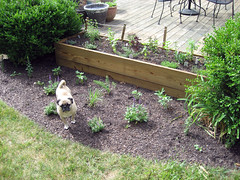I love perennial gardening. I prefer varieties that put on a show all Summer long (as opposed to plants with shorter bloom seasons like mums and daylilies), and it is so satisfying to see the plants return year after year. Once established, perennials are pretty much maintenance free, requiring just the occasional watering during extreme drought.
I have numerous perennial beds around the yard, but my favorite has got to be the garden I planted this year from seed. Not because it is any more lovely than the other gardens, but because I feel so accomplished to have grown these plants from seed.
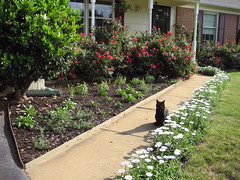
We recently mulched the bed to keep the neighbor cat from using it as a litter box, but she still likes to do her business in there. She has killed four plants with her kitty bombs, but I'm not sure how to keep her out that doesn't involve a BB gun. We also installed edging to keep the mulch in place. I think it looks nice, but I'll be happy when the flowers spill over the side to soften the hard line of the edging.

Our front yard is sloped such that you can't actually see this bed from the road, but that's ok. I like to think of this garden as a little "surprise" for people who come up the driveway.
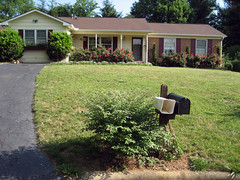
It's hard to believe that this evening primrose was sown just four months ago. All four plants are already blooming! I read that evening primrose blooms open in the evening and close in the morning, but these soft pink blooms are always open in this garden.
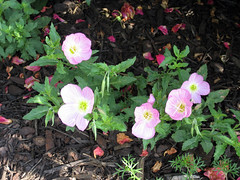
The perennial verbana has also amazed me with prolific blooms. I didn't think any of the plants would flower this year, but they have proven me wrong! I like to be wrong sometimes ;) The coreopsis doesn't seem far from blooming either!
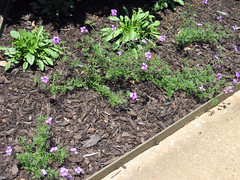
This is the third year for the daisies, and they are certainly leaping! They have never been so beautiful, and the blooms are lasting longer than ever. I love these shorty daisies. I think they are the perfect height for this area.

The perennial flowerbox is also thriving. The calamintha is the only plant that wilts in the mid-day heat, but I don't mind watering it. It has a light scent similar to mint, so it's always pleasant to take a break and enjoy the scent for a couple minutes. When I planted the snapdragons, I had no idea what color each plant in the mixed variety was going to be. I was pleasantly surprised to see that the two maroon plants made their way to either side of the salvia. I love symmetry.
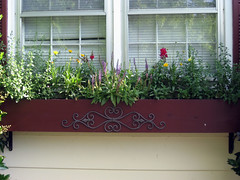
This perennial garden is located in the backyard and is very difficult to photograph for some reason. Its beauty just doesn't come through very well in digital form.
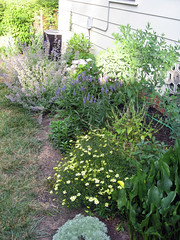
Purple and yellow are quickly becoming my favorite planting color combination. This moonboom coreopsis and purple veronica complement each other in color and height variation.
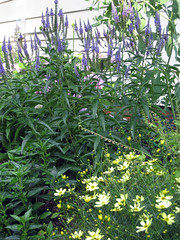
Bumblebees love Veronica! They have been busy working to collect every speck of pollen from these plants.
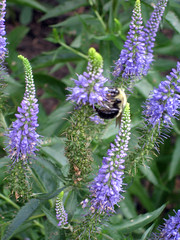
The view from the opposite direction is pretty much hindered completely by the catmint. I had no idea catmint would grow to be this large, especially one year after planting! I will need to cut it back by about two-thirds in the next couple weeks to encourage a second wave of blooms. Note that cats are attracted to catmint. I have chased a neighbor's cat out of the catmint twice in the past two weeks! (It is a different cat than the one who uses the front garden as a litter box.)
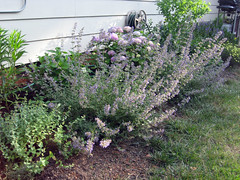
This endless summer hydrangea is being slightly obstructed by the height of the catmint, but the blooms are no less beautiful. I purchased this plant in May 2006, and it is performing beautifully. This is my #1 pick for hydrangeas, at least from my experience with the plants. It should grow tall enough this year to compete with the height of the catmint. Ultimately it will reach a maximum height of 5'.

I love the color variation - pink, purple, blue, white. These blooms are gorgeous! This variety blooms on old and new wood, so don't prune it back in Winter.
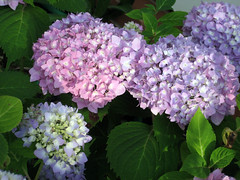
My calla lilies decided to bloom after a break from blooming last year. Callas are my favorite flower. I just wish they bloomed longer, and I will never understand why they are so expensive. They multiply very quickly and tend to be hardier than they are supposed to be. I overwintered these bulbs in the ground, but from everything I have read, they are not supposed to be hardy in my zone! I was so happy to see them emerge from the soil this Spring, because I thought my absent-mindedness has killed them for sure!
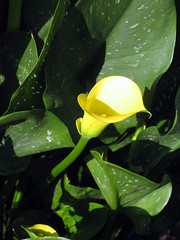
Perennials require a lot of patience since it generally takes three years for a plant to perform at its best. You can fill in the bare spaces with annuals while you are waiting for your perennials to grow, since annuals grow very quickly.
Cosmos are a fast-growing full sun favorite that come in many colors and heights. Impatiens are great for shady areas occupied by slow-growing ferns or other shade-loving perennials.
Although annuals last only one season, they are relatively inexpensive, and you get a lot of reward for the cost. Some gardeners like to reserve a place in the perennial garden for annuals to keep the garden dynamic throughout the years. A change in the color scheme of the annuals can change the entire look of the garden. I have not experimented much with annuals, but I am slowly warming up to them.
Labels: "knockout roses", asheville, gardening, perennials
